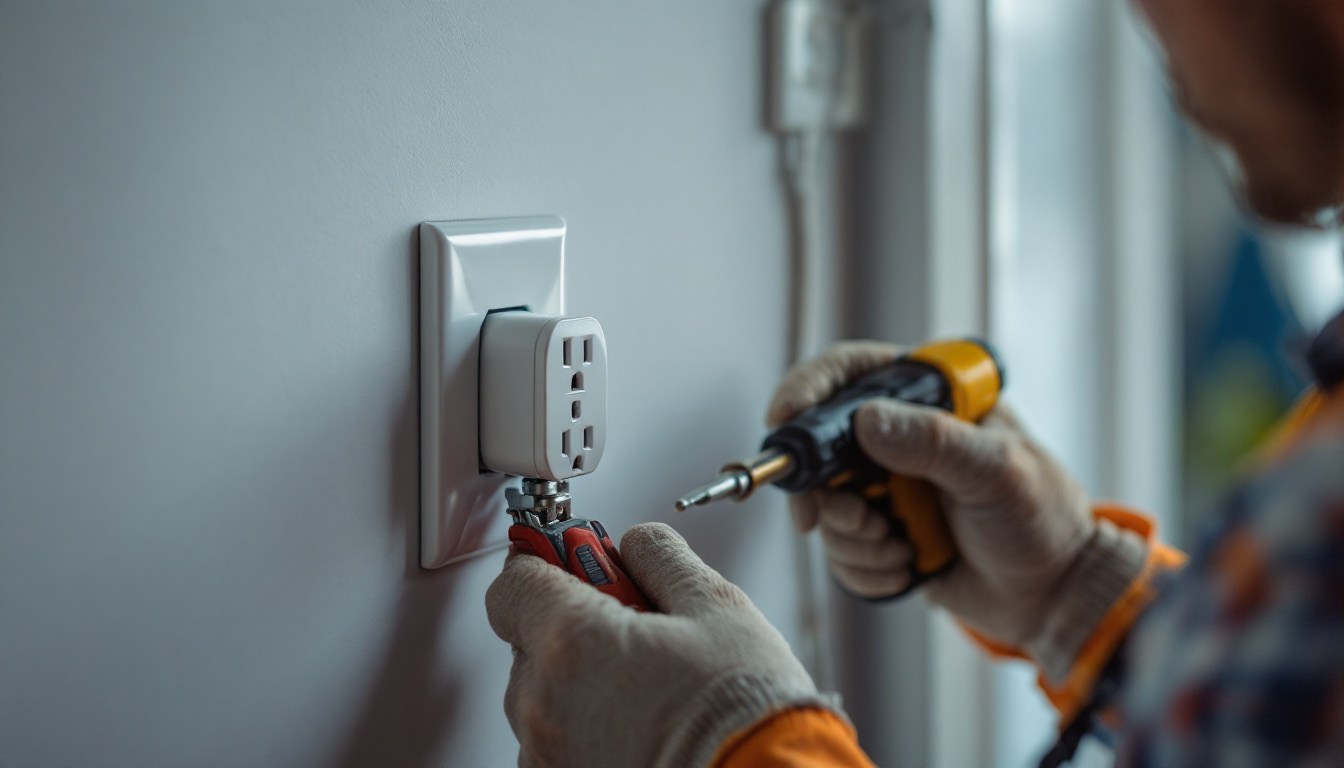

Lighting contractors play a pivotal role in ensuring that electrical systems are installed safely and effectively. Among the various tools they rely on, wire pulling ropes stand out as essential equipment. These ropes not only facilitate the installation of lighting fixtures but also enhance overall efficiency on the job site. This article delves into the significance of wire pulling ropes, their types, and best practices for use, providing valuable insights for lighting contractors.
Wire pulling ropes are indispensable for lighting contractors who need to run electrical wires through conduits, walls, and ceilings. The primary function of these ropes is to assist in the smooth and efficient pulling of wires, which can often be a challenging task due to tight spaces and complex pathways.
Using wire pulling ropes can significantly reduce the physical strain on contractors, making the process safer and more manageable. Moreover, they help in minimizing the risk of damaging the wires during installation, which can lead to costly repairs and delays.
Time is money in the contracting business, and wire pulling ropes can greatly enhance installation efficiency. By allowing multiple wires to be pulled simultaneously, these ropes streamline the process, enabling contractors to complete projects faster. This efficiency not only benefits the contractor but also improves client satisfaction, leading to potential referrals and repeat business.
Furthermore, the use of wire pulling ropes can facilitate the handling of longer runs of wire, which are often required in larger buildings or complex installations. With the right rope, contractors can navigate through bends and turns in conduits with ease, reducing the likelihood of kinks or snags that can slow down progress. This capability is particularly beneficial in commercial settings, where the scale of the project demands quick and effective solutions to keep timelines on track.
Safety is paramount in any electrical installation project. Wire pulling ropes contribute to a safer working environment by reducing the need for excessive force when pulling wires. This minimizes the chances of accidents and injuries, which can occur when contractors attempt to pull wires without the proper tools. Additionally, using the right rope can prevent damage to the wires themselves, ensuring a safer end product.
In addition to reducing physical strain, wire pulling ropes can also enhance visibility and organization on the job site. Many ropes are designed with bright colors or reflective materials, making them easier to spot in dimly lit areas. This feature not only helps in preventing tripping hazards but also aids in keeping the workspace tidy, as contractors can quickly identify which ropes are in use and which are free for future tasks. Moreover, some modern wire pulling ropes come equipped with features such as built-in grips or ergonomic handles, further improving safety and ease of use during installations.
Understanding the different types of wire pulling ropes available can help lighting contractors choose the right one for their specific needs. Each type has unique features that cater to various applications, making it essential to select the appropriate rope for the job.
Nylon wire pulling ropes are among the most popular choices for lighting contractors. Known for their strength and durability, these ropes can withstand significant tension without breaking. Their lightweight nature makes them easy to handle, while their resistance to abrasion ensures longevity, even in demanding environments.
Additionally, nylon ropes are often treated to resist moisture and chemicals, further enhancing their durability. This makes them suitable for both indoor and outdoor applications, providing versatility for lighting contractors working in various settings. Furthermore, the elasticity of nylon allows for some stretch, which can absorb shocks during heavy pulls, reducing the risk of sudden breaks and ensuring a smoother operation.
Polyester ropes are another excellent option for wire pulling. They offer similar strength and durability to nylon but have a lower stretch factor. This characteristic can be particularly beneficial when precise control is required during the wire pulling process.
Moreover, polyester ropes are resistant to UV rays, making them ideal for outdoor use where exposure to sunlight is a concern. Their ability to maintain strength and integrity over time ensures that contractors can rely on them for multiple projects. Additionally, polyester ropes are less susceptible to mildew and rot, which is especially advantageous in humid environments where moisture can compromise the integrity of other materials.
In addition to nylon and polyester, there are specialty wire pulling ropes designed for specific applications. For instance, some ropes come with added features such as built-in swivels or hooks, which can facilitate easier handling and reduce tangling during the pulling process.
These specialty ropes can be particularly useful in complex installations where maneuverability is critical. Contractors should assess the specific requirements of their projects to determine if a specialty rope would enhance their efficiency and effectiveness. Furthermore, some specialty ropes are designed with specific coatings or braiding techniques that improve grip and reduce slippage, ensuring that the wire remains secure during the pulling process. This attention to detail can significantly impact the overall success of an installation, especially in challenging environments where precision is paramount.
While wire pulling ropes are invaluable tools, their effectiveness largely depends on how they are used. Adopting best practices can ensure that lighting contractors maximize the benefits of these ropes while minimizing potential issues.
Choosing the right wire pulling rope is the first step toward a successful installation. Contractors should consider factors such as the type of wire being pulled, the length of the run, and the environmental conditions. For instance, a heavier gauge wire may require a stronger rope, while a longer run may necessitate a rope with less stretch.
Additionally, contractors should ensure that the rope is rated for the specific load it will be handling. This attention to detail can prevent accidents and ensure a smoother installation process. It’s also worth noting that different materials, such as nylon or polyester, can offer varying levels of strength and flexibility, which can be crucial depending on the specific demands of the job. Understanding the material properties can help contractors make informed decisions that enhance both safety and efficiency.
In many cases, using a lubricant can significantly ease the wire pulling process. Lubricants reduce friction, making it easier to pull wires through conduits or tight spaces. Various types of wire pulling lubricants are available, including gels and sprays, each designed to enhance the efficiency of the pulling process.
It is crucial to choose a lubricant that is compatible with the type of wire being used, as some lubricants can damage insulation materials. Proper application of lubricant can lead to a more efficient and less labor-intensive installation. Moreover, using the right amount of lubricant is equally important; too little may not provide the desired effect, while too much can create a mess and complicate the pulling process. Contractors should also be aware of the environmental conditions, as temperature and humidity can affect the performance of certain lubricants, necessitating adjustments in their application methods.
To ensure longevity and reliability, regular inspection and maintenance of wire pulling ropes are essential. Contractors should check for signs of wear, fraying, or damage before each use. Any compromised rope should be replaced immediately to avoid potential failures during installation.
Additionally, storing ropes properly when not in use can prevent damage from environmental factors or improper handling. Keeping ropes coiled and away from direct sunlight or moisture can extend their lifespan and maintain their performance. It’s also beneficial to periodically clean the ropes to remove dirt and debris that can cause abrasion or weaken the fibers over time. Implementing a routine maintenance schedule can help contractors stay ahead of potential issues, ensuring that their equipment remains in optimal condition for every job.
The field of electrical contracting is continually evolving, with new technologies emerging to enhance efficiency and safety. Recent innovations in wire pulling technology have introduced tools and equipment that can complement traditional wire pulling ropes.
Electric wire pullers are becoming increasingly popular among lighting contractors. These machines automate the wire pulling process, significantly reducing the physical effort required by contractors. Electric pullers can handle larger loads and longer distances, making them ideal for extensive installations.
While these machines can be a significant investment, their ability to increase productivity and reduce labor costs often justifies the expense. Contractors should evaluate their workload and project requirements to determine if an electric wire puller would be a beneficial addition to their toolkit.
With the rise of smart technology, some wire pulling tools are now equipped with sensors and digital displays that provide real-time feedback during the pulling process. These innovations can alert contractors to potential issues, such as excessive tension or misalignment, allowing for immediate corrective action.
Integrating smart technology into wire pulling can enhance safety and efficiency, making it a worthwhile consideration for modern lighting contractors looking to stay ahead in a competitive market.
Wire pulling ropes are essential tools for lighting contractors, playing a crucial role in the efficiency and safety of electrical installations. Understanding the different types of ropes available, adopting best practices for their use, and staying informed about innovations in wire pulling technology can significantly enhance a contractor’s effectiveness on the job.
By investing in quality wire pulling ropes and related tools, lighting contractors can streamline their operations, reduce risks, and ultimately deliver better results for their clients. As the industry continues to evolve, embracing these tools and practices will be key to maintaining a competitive edge and achieving long-term success.
Ready to elevate your electrical installations with the best tools in the trade? Look no further than LumenWholesale for all your wire pulling rope needs. Our commitment to quality and affordability ensures that you get spec-grade, high-performance products without the premium price tag. Say goodbye to local distributor markups and hello to our extensive selection of reliable lighting products. Plus, with free shipping on bulk orders, you can stock up on essential tools while keeping your costs down. Don’t compromise on quality or value—Wholesale Lighting at the Best Value is just a click away. Enhance your efficiency, safety, and client satisfaction with LumenWholesale today.

Discover essential insights into outdoor house lighting that every contractor should know.

Explore the essential insights every lighting contractor needs to know about recessed can lights.

Discover innovative strategies and expert tips for lighting contractors to optimize high bay metal halide lights.

Discover essential tips and best practices for lighting contractors on securely locking electrical outlet plugs.
Get notified when NEW deals are released.
Optimize your budget with wholesale discounts.
Only top-quality, specification-grade lighting products.
No additional costs at checkout - what you see is what you pay.
We understand the unique needs of contractors.